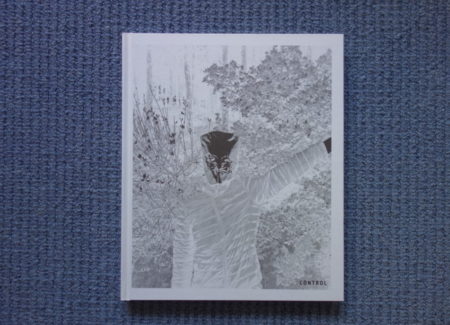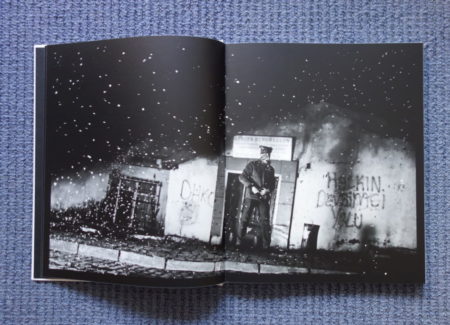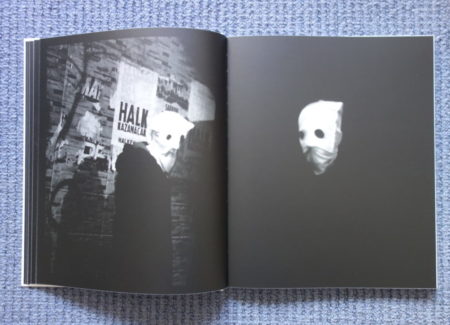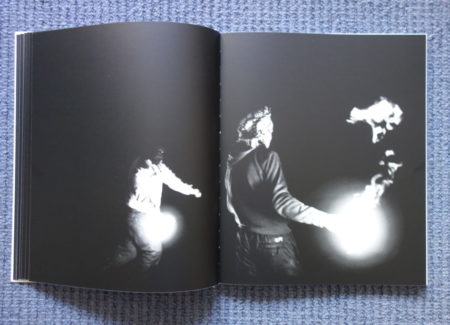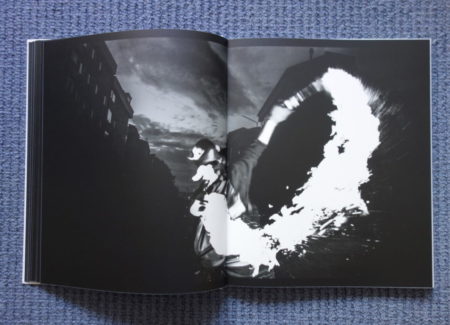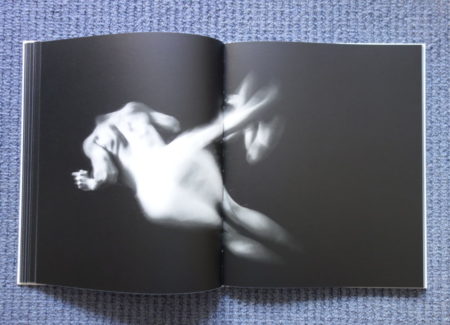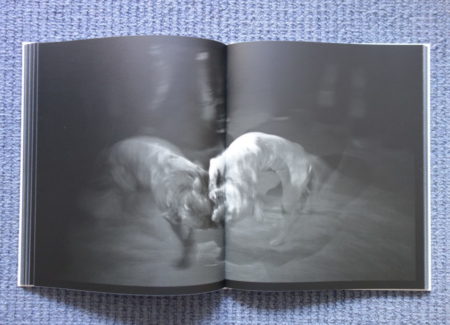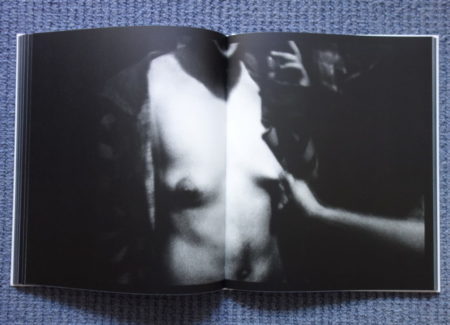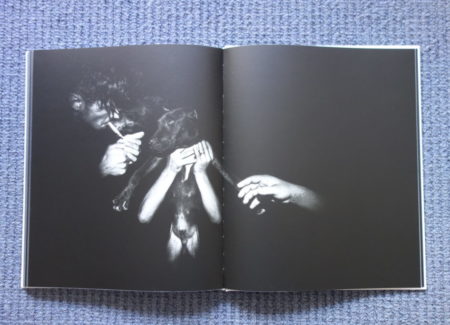JTF (just the facts): Published in 2017 by Akina Books (here). Hardcover, 112 pages, with 44 black and white reproductions. The images were taken in Istanbul between 2015 and 2017. Includes an unattributed multi-page text. (Cover and spread shots below.)
Comments/Context: One of the common threads that ties together repressive societies of all kinds is their overt marginalization of those that fall outside the majority. Whether socially conservative, strictly religious, or simply dominated by overly powerful governments or leaders, these societies actively push minorities of all kinds into the shadows, hoping to make them disappear. But history has shown that the marginalized are far more resilient than the oppressors ever expect – the persecuted and overlooked typically respond by going underground, often moving their public behavior into private and making themselves largely invisible to those that would do them harm. Resistance (of all kinds) happens under the cover of darkness, to provide safety for those who are willing to contradict the powerful.
Çağdaş Erdoğan’s photobook Control provides a hauntingly atmospheric look at life on the tormented margins of contemporary Istanbul, weaving together several strands of prohibited activities in the increasingly conservative society. In many ways, it draws from multiple photobook traditions, bringing together relatively equal parts from several genres we have seen before – the seamy underbelly of nightlife project, the improvised protest movement documentary effort, and the in-depth study of out-on-the-edges subcultures and illicit behaviors – creating one intermingled flow.
Erdoğan’s pictures capture a cross section of the nocturnal activities in the Gazi district, a segregated neighborhood largely populated by minority Kurds, Alevis, and refugees and a place where those outside the mainstream have gone into hiding. Control is organized into a four-part visual harmony, interleaving images from illegal dog fights, shadowy sex clubs, harrowing gun violence, and fiery political protests into one seething whole, mixing the expression of contrarian points of view, alternate sexual preferences, bored masculinity, and outright criminality into a potent brew. While we might normally assume these four might have little obvious commonality in either spirit or aesthetics, Erdoğan delivers one unified body of work that shifts from one subject to another with surprisingly fluidity.
When paired together, Erdoğan’s snarling dogs and ephemeral D’Agata-like bodies play hard against soft, with pent up tension and violence lingering nearby. When a naked man on all fours is followed by a dog yanked upward by a chain exposing its underside, the interplay between the two is made more explicit, and other images of pairs of dogs and faceless people seem to echo each other in the urgency of their thrashing movements. Similarly unlikely parallels can be found between the gun-toting criminals and the protestors, their faces covered by hoods, masks, and headscarves and their poses often supported by a hint of swagger. Erdoğan’s nighttime images of burning Molotov cocktails are particularly expressive, the flames turning into swirling arcs and pinprick sparkles like fireworks.
It’s the consistent enveloping blackness of these pictures that ties the mood together. Erdogan’s unbalanced frames leave plenty of space for darkness, and full blank pages add to the sense of groping in the dark. Flash lit figures emerge from the shadows, their secrets exposed for just a moment before receding back into the night. We hardly ever see an actual human face that we might identify or empathize with, the bared teeth of dogs and the spooky silhouettes of gas masks instead standing in as the actors in this stage play. Even the cover of the photobook itself adds one more layer of disorienting inversion, turning the front and back into eerie negatives that hint at the unsettled disquiet that lies within.
Erdoğan’s Istanbul night is populated with a crackling spectrum of emotions, where raw brooding brashness meets more subdued and evasive vulnerability, with fear and desire simmering underneath. While he pushes his images to the the edge of pared down symbolism, he does so without tipping over into stylized sensationalism. The result is a layered collective portrait that feels direct and honest, while still having room for artistic improvisation. There is real danger in each of the personal rebellions found in these volatile pages, and Erdoğan channels that genuine intensity of experience with memorable energy.
Collector’s POV: Çağdaş Erdoğan does not appear to have gallery representation at this time. As a result, interested collectors should likely follow up via the artist’s website (linked in the sidebar).
